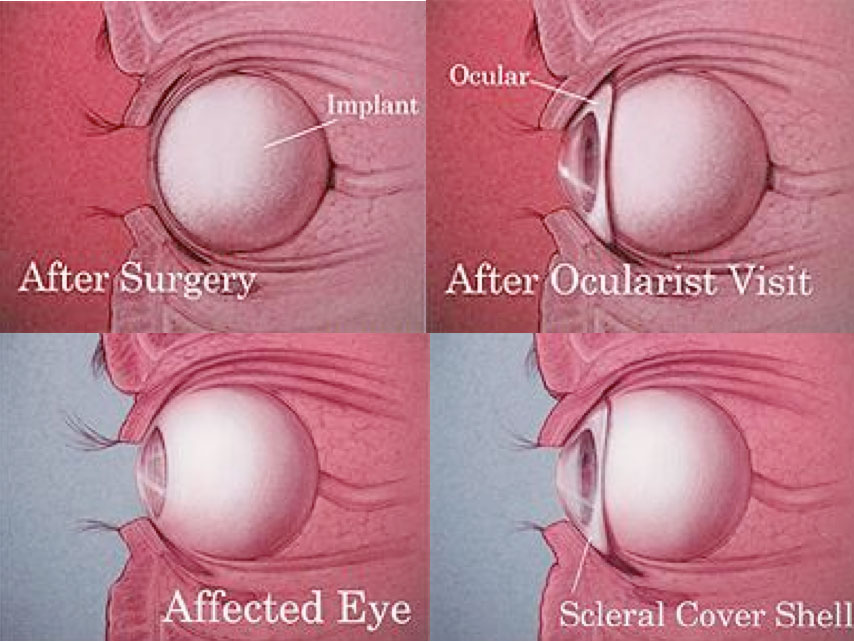Prothesis
Ocular Prosthesis otherwise known as an artificial eye, is a plastic prosthesis used when an eye is surgically removed. During surgery, a ball implant is inserted into the eye socket to fill the area the eye once occupied. An ocular prosthesis is then molded to fit in front of the implant. It occupies the space between the eyelids and the skin (conjunctiva) covering the implant.
The ocular prosthesis is generally made four to six weeks after surgery in order to allow the socket tissues to heal adequately.
Until the ocular prosthesis is fitted, the upper eyelid can be droopy in appearance. The prosthesis will help support the eyelid and allow the lids to open and close normally.
Scleral Cover Shell Prosthesis is a thin, plastic prosthesis used when an eye is malformed as a result of a birth defect, or becomes non-functioning due to subsequent illness or injury. In such cases, the non-functioning eye is left within the eye socket. A prosthesis can then be molded to fit between the lids and the blind eye.
Scleral cover shells fit directly over the malformed eye. Cover shells impart a better cosmetic appearance by closely resembling the remaining good eye, while leaving the affected eye in the socket.















